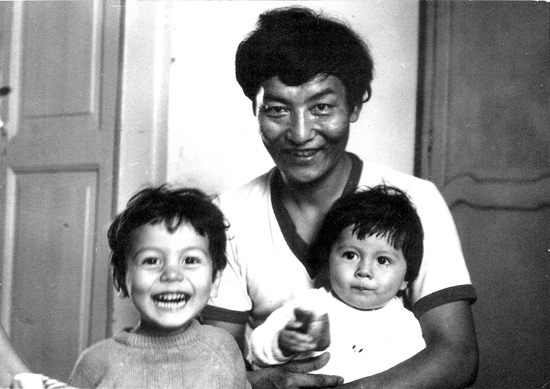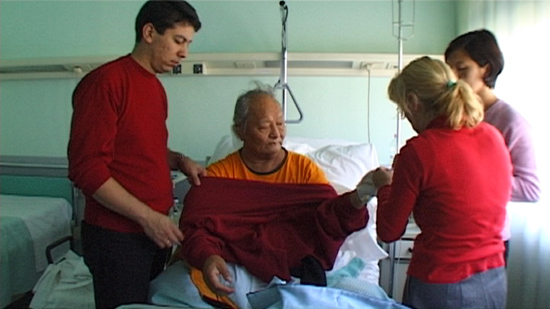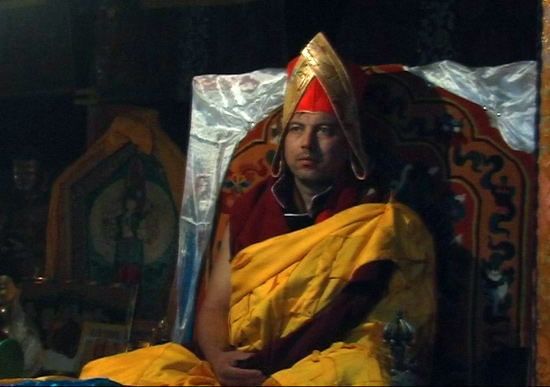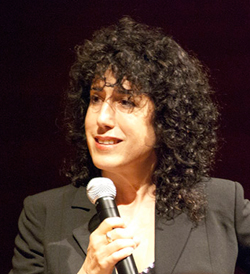Two weeks ago Jennifer Fox shared with us some of the lessons she learned crowdfunding (1st six here, next 14 here, next 9 here).
Since then, she has gone down in the record books for both the number of donations and the amount thereof. Jennifer continues her path of profound generosity with another wave of the demystification wand to show how it was done. It is not magic; it’s hard work — but it can be done, and learned from.
so I promised one last Blog Post and this one has already morphed into
three posts. But I swear that these last three posts are my last words
of wisdom about Kickstarter for a while (the final words of a self avowed Kickstarter addict).
Before I take a break and move onto other subjects, I want to let you
know that there is a fourth post coming down the pipeline from the MY REINCARNATION team – Stefanie, Katherine and Lisa – who are working on another article filled with their words of wisdom and perceptions of what they learned doing our campaign.
As you can see, the short form is not my strong suit. I am a serial
storyteller, not one for getting it all down in one neat punch. To me,
the dramatic structure of life is episodic, which is why I have always
loved the serial form and have made two documentary series and am now preparing a fiction television series. Even the new feature I am writing is told in episodic chapters.
Crowd funding is the same. It is a series of small dramatic arcs
climaxing in small successes (after those failures I mentioned in the
previous post). It would be misleading to talk about a Kickstarter
campaign like it was one big Hollywood blockbuster. So here are the
next 4 Tips, with 9 more coming, consisting of a lot of small dramas:

30. “The Lemming theory” Meets “The Power Of One”:
Everything I know about fundraising and distribution comes from my not
so original, “Lemming Theory”. Human beings want to follow. So if the
campaign is doing badly, people stay away but if those numbers are
rising, people want to jump on the boat. Before people choose to
support you they want to know the crowd is already voting for your
project. No one except your mother or your father – and perhaps but not
for sure, your lover/wife/husband – will back you without evidence. The
“Lemming Theory” means that most people don’t want to be the first one
to take the lead.
So how does anything ever happen in the world, if no one wants to stand
out? A crowd doesn’t magically form. Usually it takes one courageous
person who is respected – in the community or communities that the film
addresses – to stand up for your project. Then other people see that
individual, figure things are “safe”, and start to join in. That means
that you, as the campaign team, are always searching for “key people”
to embrace your film or your campaign and lead the way. And usually, it
is a series of “Ones’”, over the course of the campaign that will get
the project funded.
In fact, when you get many key individuals standing up, that is when
the crowd turns into a stampede. (That is what happened in the last
days of our campaign when donations suddenly went crazy, but more on
that in the coming post Tip #40). To be clear, these key individuals
are not necessarily famous people, although they can be since they have
a lot of that “respect factor”, it depends on the project. But they are
people who are trusted in the community that you are reaching out to
for funding. Sometimes too, when you cast a wide net, people unknown to
you turn up and embrace your campaign and lead the charge…
31. Team Web – Spreading Your Reach through People and Press:
There are many reasons to build a Kickstarter team (see previous Post #1 and previous Tip #2).
Besides handling the sheer volume of Kickstarter work, a team expands
your idea base, and also your contact base. As I have mentioned
earlier, our core MY REINCARNATION Kickstarter team consists of Stefanie, Katherine and Lisa – each bringing different skills and experience to the campaign.
At the beginning of setting up our campaign, Katherine, suggested we
write down all our existing film partners and contact them to see if
they would help in spreading the word about the campaign. It was a
given that we would engage the Buddhist Community of the film
protagonist, Choegyal Namkhai Norbu, and his son, Khyentse Yeshe, with whom I have good contact. (This is the key benefit to having a niche audience as I discussed in the previous Tip #22.) But we were also looking for some traction in a wider circle of people than the obvious ones we knew.
Our Executive Producers and Funders were the first people we contacted
about our plan. Perhaps wrongly we did not engage our European film
partners at this level, since crowd funding is still new in Europe. (In
retrospect, why not? They might have made good outreach in their
communities. Oh well, next time…)
Interestingly some of our partners and EP’s took no interest in our
fundraising project. They adopted the attitude that they had helped the
film enough already and my current financial crisis was my problem,
which is fair enough. Others like Executive Producer, Dan Cogen, from IMPACT PARTNERS,
became a real source of support, blasting news of our campaign, Sneak
Preview Screenings, and answering email questions immediately no matter
how busy. One of many examples of his help relates directly to this
post.

In a late a game brainstorming session – after we had met our original
goal of $50,000 but were trying to make $100,000 – our team was
discussing strategies of how to push the campaign forward. Among the
many ideas, Lisa suggested that we needed to get people writing about
our campaign. We discussed trying to get someone to write about our
campaign at the Huffington Post. Lisa loves the blog “Hope for Film” and thought we should contact Ted Hope,
whom none of us knew except by reputation. She set about searching the
web for his contact address, but came up with nothing. Then I found him
on Facebook, wrote him, but no reply. On a lark, I emailed EP Dan to
see if he knew Ted, and indeed he did and immediately wrote him,
pitching the story of our campaign, which led to our first Blog Post
on the site. What I didn’t know is that now Ted would also become a
strong supporter of our efforts and keep publishing our story as it
spread to three blog posts and now five.
Another example of how your team can help expand your contacts is the way we were able to connect with the Rubin Museum of Art and the programmer Tim McHenry. We were looking for a place to do a “Sneak Preview Fundraising Screening”
in NYC but were afraid of the costs. The Rubin Museum came up but I
knew no one there. I put the word out to the Buddhist community and one
of our big community supporters in Massachusetts, named Anna, came to
the rescue with a name, which she contacted for me and then passed to
me. Once I reached out to the person at the Rubin, the ball was in
play, and she passed us to Tim, who viewed the film quickly, loved it
and offered to host the screening. The Rubin also has a press office
that went to work for the event. There were several journalists who
came to that screening, most agreed to hold their articles till the
film would be released. But also at the screening was someone from the
Religion Department of the Huffington Post, who afterwards expressed
interest to Stefanie that I write a blog. I did so and it was published
five days before the end of the campaign, called, “Buddhist Samaya and the Making of ‘MY REINCARNATION’”. So another idea of Lisa’s was realized.
This is how “Team Web” works, everyone on your team – from the current
team to all those you have partnered with during all phases of the
making of the film – if contacted and enrolled in the effort can spread
your reach exponentially in ways that you never could have dreamed when
you started. Every person on your team is like the center of the web
with endless potential contacts.

32. Blanche Dubois & Depending On The Kindness of Strangers:
While the above stories are perfect examples of getting help from
people you know, the Blanche Dubois axiom is about the unexpected
support that can come your way. Many people along the campaign heard
about the film and our need to complete the funding and took up the
cause of raising funds as their own. This is where the web is truly a
miraculous tool to reaching out and connecting with like-minded
strangers.
One woman in Italy – named Frauke – who couldn’t afford to donate,
emailed me that she wanted to help our cause. Then another person from
Argentina – Raul – wrote me the same thing, asking if he could
translate our Kickstarter page
into Spanish. Both criticized some of our message, saying it was hard
for people outside the US to understand what crowd funding was. They
asked us to make it clearer and better. At first I was pissed off. I
stalled them both. People wanting to help seemed just like more
problems to me.
Quite honestly in the beginning I was afraid of these offers. I
thought, “I don’t know this person, the Buddhist community is a bit
tricky, what if he or she writes the wrong thing…?” I have always
been quite protective of my projects, working by that old axiom, ‘too
many cooks spoil the pudding’. But Kickstarter was busting all of
my other notions, why not this one. I knew we needed more traction in
the world, so I gave them rein. I did communicate with them about the
importance of what was written about the fundraising. Sometimes I had
to say no to some of their ideas. For example, Frauke asked me to get
the film protagonist Chögyal Namkhai Norbu
to write an endorsement of the film, but I didn’t want to bother him
with this, which seemed too pushy, but we were able to quote something
he said at the fundraising screening of the film in Melbourne, which seemed to work as well.
Suddenly everywhere on Facebook were posts from Frauke or Raul. It was
strange but glorious, because we didn’t have to do the work. Our reach
expanded and I loosened up a bit. Others offered help. A German woman,
Christiana, wrote me, worried that the shipping of single DVD’s to
Europe made them too costly (One of our incentives was a 2012 Commercial DVD pre-sale).
She asked if she could collect monies for the Commercial DVDs and make
one big donation, but then have one person bring them all to Europe. I
said fine not thinking too much about it, when three weeks later she
wrote that she had pre-sold DVD’s to the tune of $6,300, could she make
one large donation to the site? I said yes, floored. When a $10,000
came on the last day – the donor wrote us that she represented 60
people in China who had pooled their monies to make one large
contribution! Oh Blanche, it’s a shame you never knew about the web!
Stay Tuned for the Next Two Parts with 9 more Kick-Tips…

Jennifer Fox is an award-winning filmmaker and educator known for her ground-breaking features and series, including BEIRUT: THE LAST HOME MOVIE, AN AMERICAN LOVE STORY, FLYING: CONFESSIONS OF A FREE WOMAN and MY REINCARNATION. She recently co-wrote the half hour television pilot, THE GOOD EGG and is developing the feature script, THE HORSE’S TALE. She has executive produced many films, including LOVE & DIANE and ON THE ROPES. Fox is the film subject in: TO HECK WITH HOLLYWOOD!, CINEMA VERTE: DEFINING THE MOMENT and CAPTURING REALITY: THE ART OF DOCUMENTARY.





